Family : Pomacanthidae

Text © Giuseppe Mazza

English translation by Mario Beltramini
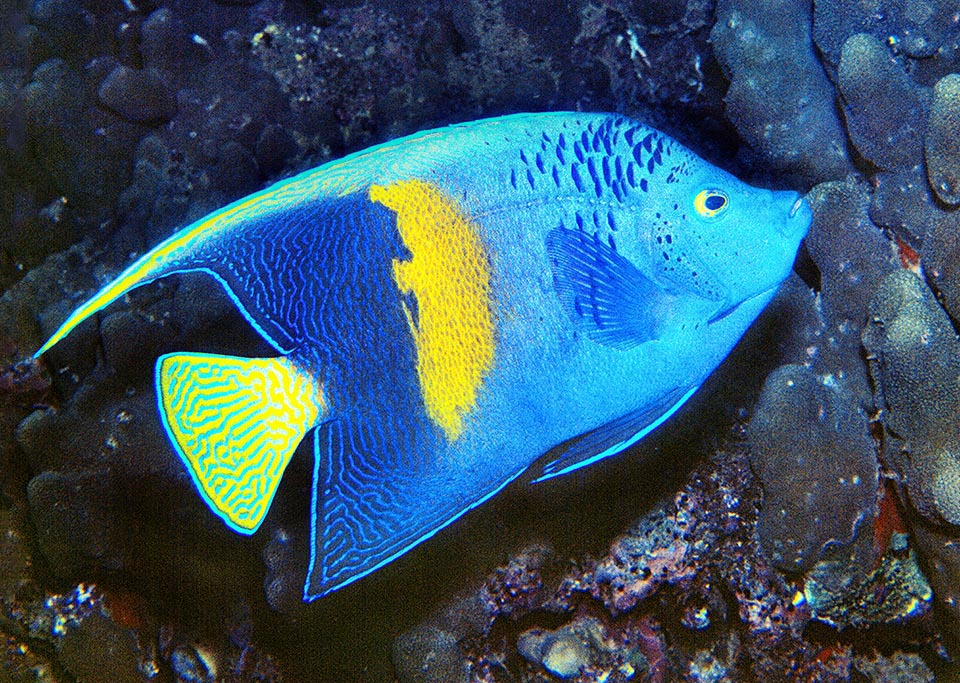
The flamboyant Yellowbar angelfish (Pomacanthus maculosus) is present in western Indian Ocean, from the Red Sea and the Arabian Sea up to South Africa and Madagascar © Giuseppe Mazza
Increasingly rare, the Yellowbar angelfish (Pomacanthus maculosus Forsskål, 1775) belongs to the class of Actinopterygii, the ray-finned fishes, to the order of Perciformes and to the family of Pomacanthidae.
The name of the genus comes from the Greek “poma” = cover and “akantha” = spine, with reference to the spine on the preoperculum. The name of the species “maculosus” = mottled, spotted in Latin, evokes the typical yellow spot visible on the sides.
Zoogeography
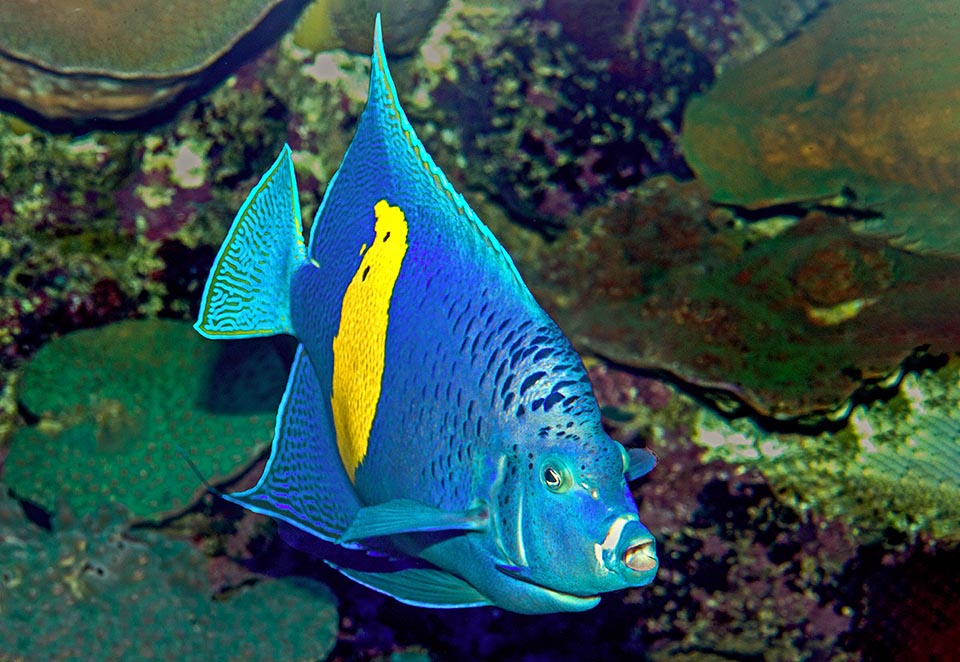
It lives in the madreporic formations up to 50 m of depth and has recently entered the eastern Mediterranean via the Suez Canal © Giuseppe Mazza
It is present in the western Indian Ocean, from South Africa and Madagascar up to the Red Sea and the Arabic Sea. Recently it has been fished in the eastern Mediterranean coming from the Red Sea and also Pomacanthus maculosus therefore belongs to the increasing group of species defined Lessepsian, from the name of the engineer Ferinand de Lesseps who planned and followed the realization of the Suez Canal.
Ecology-Habitat
It lives in the madreporic formations up to 50 m of depth.
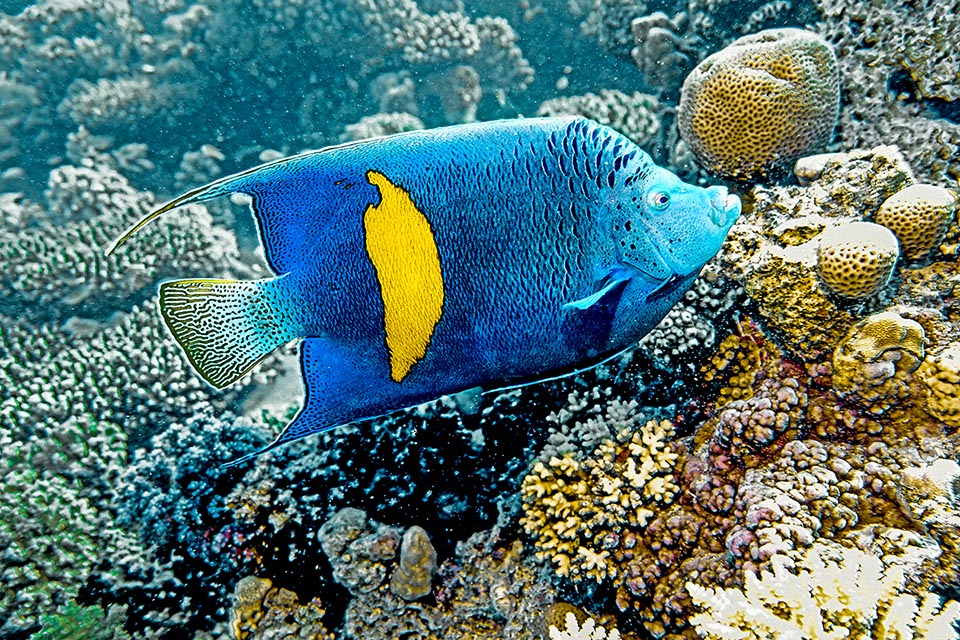
It can be 50 cm long with an unmistakable livery due to the showy yellow lateral band and the scales and dark zones well visible on the head © Karine Marangon
Morpho-physiology
The yellowbar angelfish can reach the 50 cm. The body, more or less squared when the fins are spread, is compressed laterally with a showy spine at the base of the preoperculum as the name of the genus states.
The dorsal fin has 12-13 spiny rays and 21 soft; the anal 3 spiny rays and 19-20 soft; the ventral and pectoral ones are unarmed and the caudal is slightly rounded.
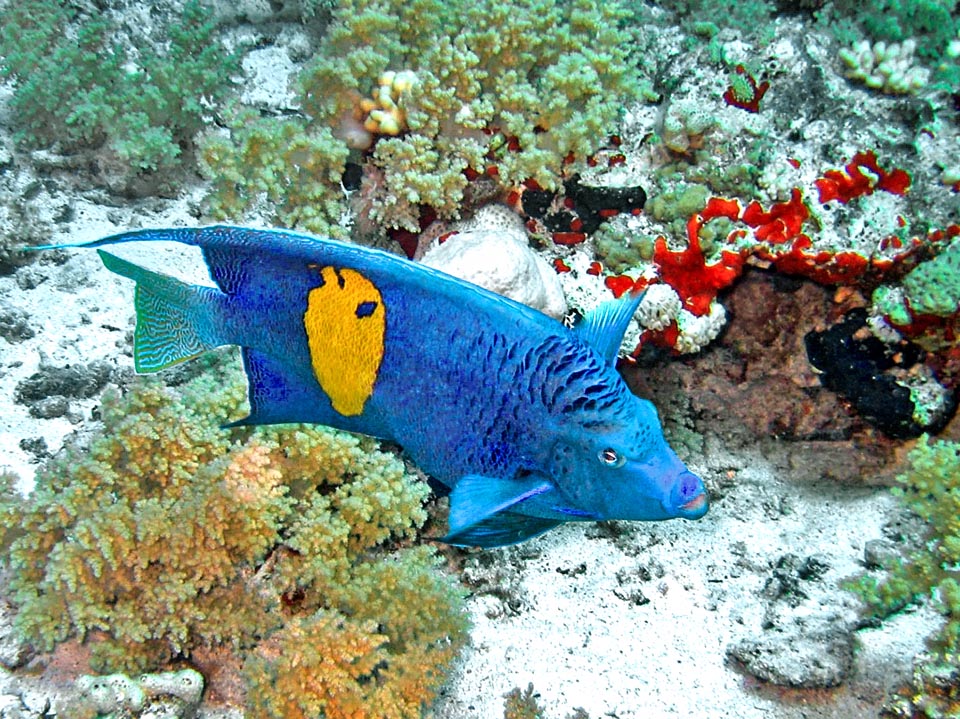
It mainly eats sponges and ascidia, without forgetting the weeds and the film of diatoms and of cyanobacteria covering the seabed © Ettore Balocchi
The background colour is blue, darker and arabesqued in the rear with intense blue scales in the first part of the back and on the sides.
But the most outstanding feature is the showy lateral yellow zone at the beginning of the second half of the body: some, poetically, see in it the map of a continent in the middle of the ocean, whence the French name of “Poisson Ange géographe” , which means “Geographic angelfish”, others a “crescent”, the heraldic term for indicating the quarter of the moon, whence the name, always in French, of “Poisson-Ange à croissant” (Crescent angelfish); the English, more pragmatic, talk generally of “Yellowbar angelfish” that is of “Angelfish with the yellow stripe”.
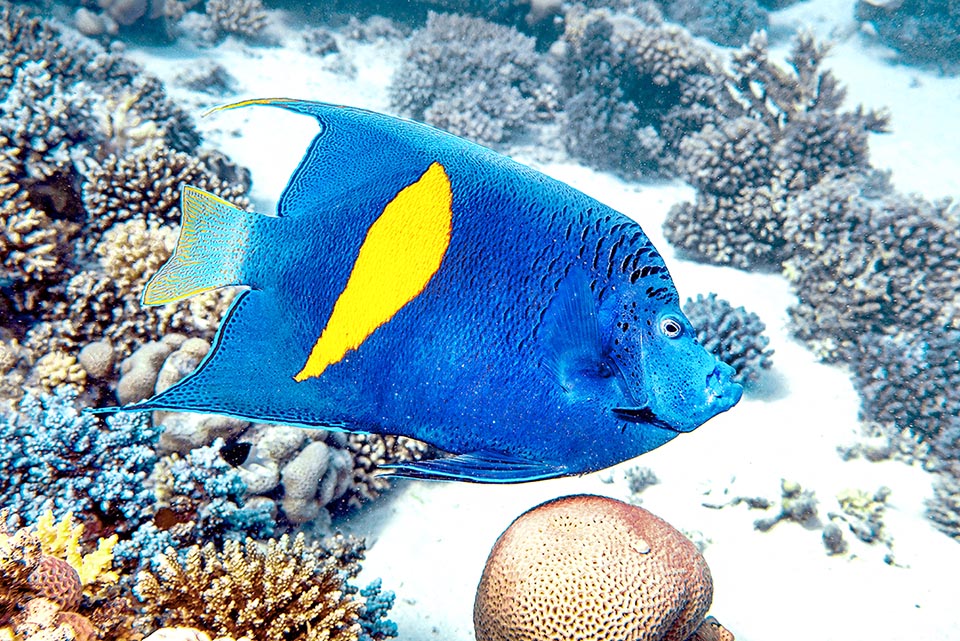
It swims alone or in couples, especially in the reproductive period. The eggs are entrusted to the currents and the larvae are planktonic © Karine Marangon
Also the arabesqued tail has some yellow colour and the dorsal fin too, but all depends on the age of the fish.
The young adults have the tail arabesqued in blue and have brighter tints; the very young are black with blue and white vertical bands of various lengths and can be told apart from other species of angelfish youngsters by their yellow tail. The yellow lateral spot appears only by the 6-8 cm.
Ethology-Reproductive Biology
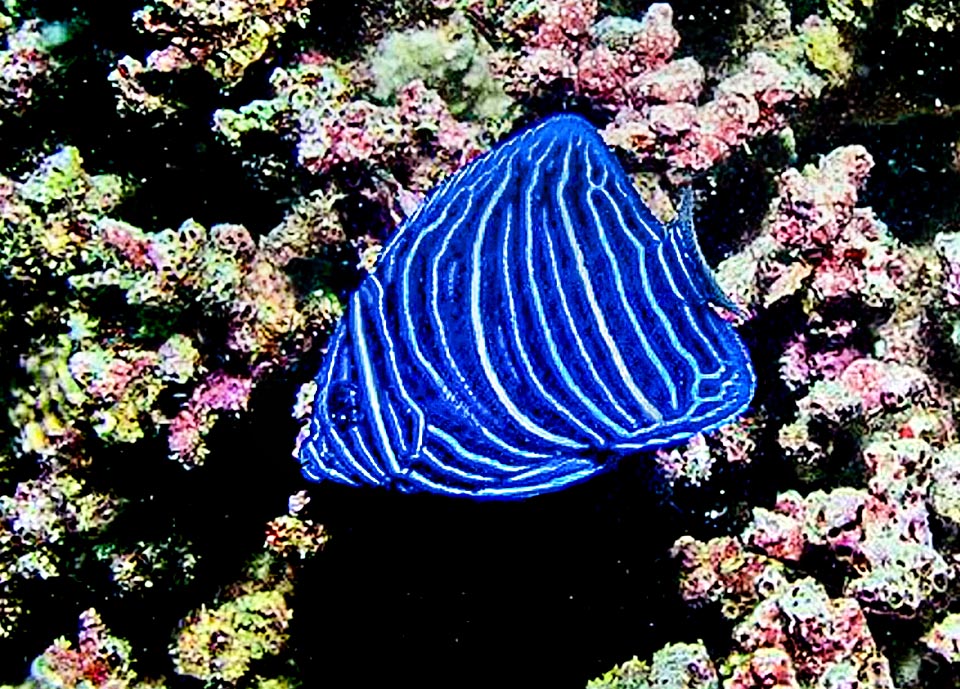
The juveniles, fished for domestic aquaria before having had the possibility to reproduce, differ much from adults and the yellow spot appears only when they exceed 6 cm © Eunice Khoo
Pomacanthus maculosus usually goes swimming alone or in couplesg, exploring the seabeds looking for sponges and the ascidia it chiefly eats, without forgetting the weeds and the film of Diatoms and Cyanobacteria often covering the bottoms.
The eggs are entrusted to the currents and also the larvae are planktonic.
The resilience of the species is decidedly low, seen that are needed more than 14 years for doubling the populations and moreover the fishing vulnerability index is very high, marking 69 on a scale of 100.
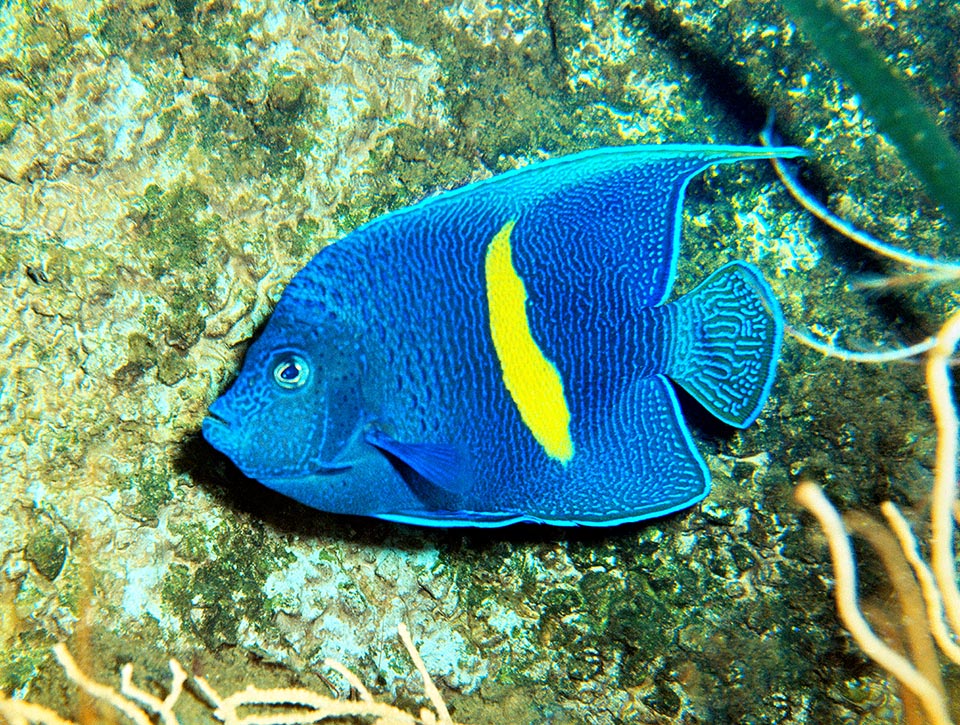
The fishing vulnerability of Pomacanthus maculosus is very high, the resilience very low, and considering then also its size it is a fish to be kept for the public aquaria © Giuseppe Mazza
The Yellowbar angelfish at times goes into the nets of the local consumption, but especially the young often end up in the aquaria without having had the time to grow and reproduce. Waiting for further details about the consistency of the populations, in 2009 it was inserted in the Red List of the endangered species as “Least Concern“, that is “Minor Worry”.
Synonyms
Chaetodon maculosus Forsskål, 1775; Holacanthus striatus Rüppell, 1836; Pomacanthodes striatus Rüppell, 1836; Pomacanthops filamentosus Smith, 1955; Pomacanthus striatus Rüppell, 1836.
→ For general information about FISH please click here.
→ For general information about BONY FISH please click here
→ For general information about CARTILAGINOUS FISH please click here.
→ To appreciate the BIODIVERSITY of BONY FISH please click here.
→ To appreciate the BIODIVERSITY of CARTILAGINOUS FISH please click here.
